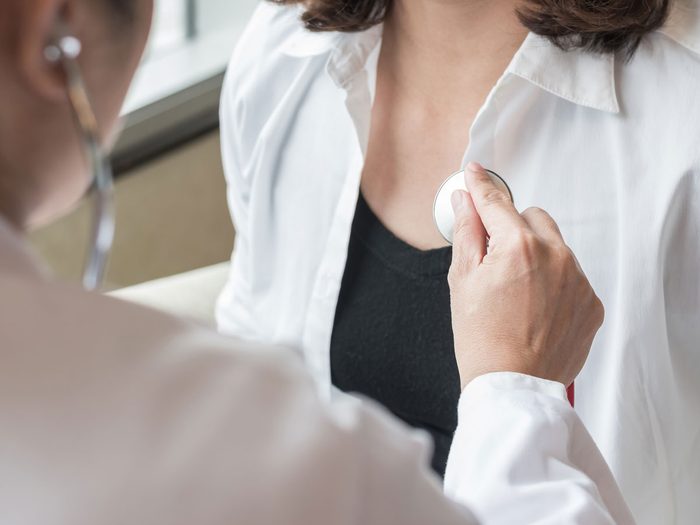
Risk factors you need to pay special attention to
Medical research focused primarily on men for decades under the assumption that the findings would apply to both genders. However, the different hormonal makeup and physical structures between men and women means that common conditions—heart disease primary among them—come with gender-specific symptoms, issues, and risk factors.
If you’re a woman, these are the heart attack prevention tips you need to know.

Limit the vino
You may have heard that a little vino is good for your heart—though that’s no reason to start drinking if you don’t already. Women should remember that they shouldn’t go drink-for-drink with their male counterparts. The Heart and Stroke Foundation of Canada recommends that women stick to two drinks per day maximum (men can have three). More than that can increase risk for high blood pressure and heart failure.

Mind your mental health
How you feel on the day-to-day matters. “We know depression increases the risk of heart disease by two- to four-fold, and it’s more prevalent in women,” says cardiologist Suzanne Steinbaum, DO, a preventive cardiologist from New York and a national Go Red For Women volunteer. There is no need to “tough it out”—seek out help (a good place to start is your doctor).
(Psst: These are the mental health issues you’re most likely to get in every decade.)

Dial down stress
Everyone experiences stress, but when it gets out of hand, stress can increase your risk for heart disease and stroke, according to the Heart and Stroke Foundation of Canada. One way stress jeopardizes heart health is by raising blood pressure. In women, finding ways to limit worry is even more critical: According to a systematic review in the journal Brain and Behavior in 2016, women are particularly susceptible to anxiety-related disorders.

Get moving
Exercise is important for everyone when it comes to preventing heart attacks. But there’s good news: You don’t have to—and maybe shouldn’t—be a marathoner to benefit your heart. In a 2015 study of more than one million women published in the journal Circulation, those who reported that they exercised moderately had lower risks of heart attacks and strokes then sedentary women; more extreme exercisers also had a slightly elevated risk. The lesson: Staying active is important—but you don’t have to run yourself ragged to reap the heart benefits.
(Psst: These are the best arm exercises for women.)
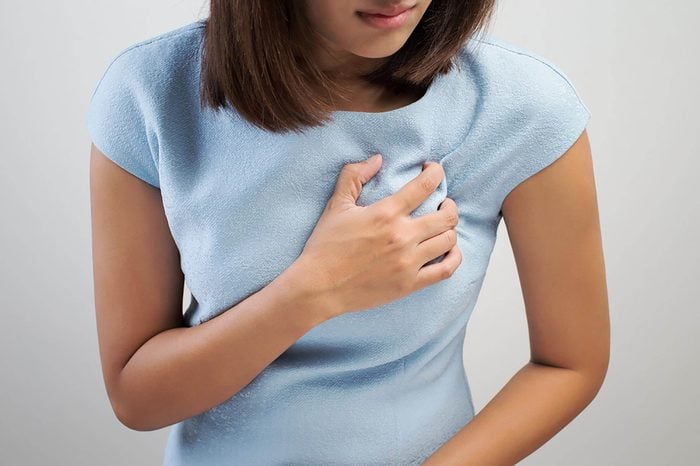
Know the signs
Women don’t always get the classic signs of chest pain and arm numbness. They might experience palpitations, shortness of breath, fatigue, and flu-like symptoms. “These are all potentially signs of heart disease, but you may not know something’s wrong with your heart,” says Dr. Steinbaum. Paying close attention to these signs—and not relying on the stereotypical chest-clutching as a clue—can be key to your getting help when you need it. (Make sure you know the signs you might be headed for a heart attack.)
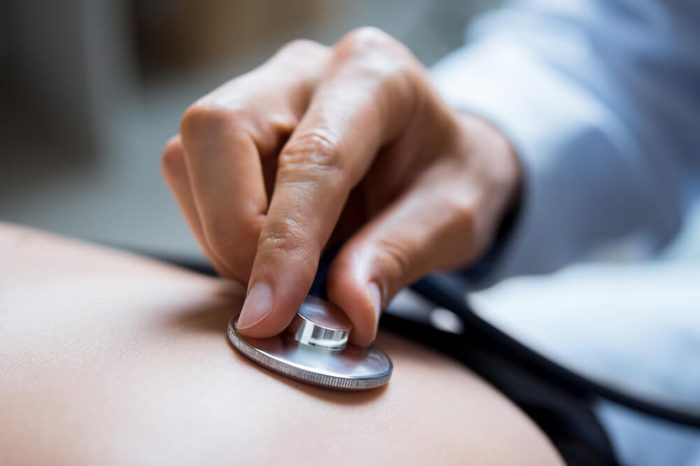
Have a well-woman visit
Of all the compelling reasons to keep your annual OB-GYN appointment—even if you’re not due for a pap—taking care of your heart may be the most important. At that appointment, your doctor can check your cholesterol (including HDL), blood pressure, blood sugar, and BMI, so you have a clear picture of your risk factors for a heart attack.

Learn the stats
Breast cancer gets all the press, but heart disease is the second leading cause of death in Canada and the number one deadliest disease for women in the United States. Keeping those statistics in mind will encourage you to pursue a heart-healthy lifestyle regardless of your age. For white and Hispanic women 20 years of age and older, one-third will develop heart disease; for African American women of the same age, nearly half will be diagnosed with cardiovascular disease, Dr. Steinbaum points out. “Screening needs to begin early and regularly,” she says.

Stop smoking—even if it’s “very light smoking”
You know smoking is bad for you, even if you’re a causal smoker. “Very light smoking” (defined as five or fewer cigarettes per day) is increasingly prevalent in young women, reports 2015 research in Preventing Chronic Diseases. This group was even likely to understand the health hazards that come from smoking. “Every time you inhale, you’re putting yourself at risk in the moment and long-term,” says Dr. Steinbaum.
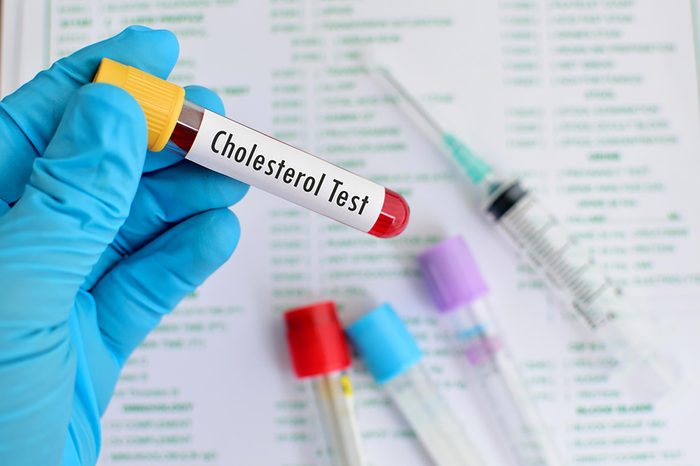
Watch your HDL
Your total cholesterol is important, but one number is especially critical: “good” HDL cholesterol, says Dr. Steinbaum. It’s the type that is heart-protective, and women want to aim for a number greater than 60—which is tough to achieve as you get older. “When women are young and have lots of estrogen, HDL is naturally high. During perimenopause and menopause, this number naturally drops,” says Dr. Steinbaum. What can you do to keep up your number? Exercise, she says. You can also try changing your diet to include more everyday foods that lower cholesterol naturally.

Measure your waist
Belly fat cradles your organs, and not in a good way: It can create dangerous inflammation that raises your risk for heart disease. The American Heart Association (AHA) sets a maximum waist circumference for women at less than 35 inches around (40 inches for men); when the waist expands beyond that number, the risk for diabetes and heart disease climbs. That said, you don’t have to focus on losing a ton of weight. What matters more is living a heart-healthy lifestyle by maintaining a healthy diet and exercising—no matter what you weigh, according to Dr. Steinbaum.

Track your health during pregnancy
If you had high blood pressure or gestational diabetes during pregnancy, the health threat doesn’t just go away after your nine months are up. “Having either of these conditions increases your cardiovascular risk later in life,” says Dr. Steinbaum. If you’re in this camp, it means you need to be even more diligent about the lifestyle factors that keep your ticker in shape.

Prioritize sleep
If you’re not clocking seven to eight hours per night, it’s time to slip into bed sooner. Too little sleep is damaging for overall heart health, according to a 2016 study published in the journal Sleep Medicine Clinics. Women suffer additional consequences such as sleepiness during the day and a higher risk of depression, reports 2017 research in the Journal of Clinical Sleep Medicine.
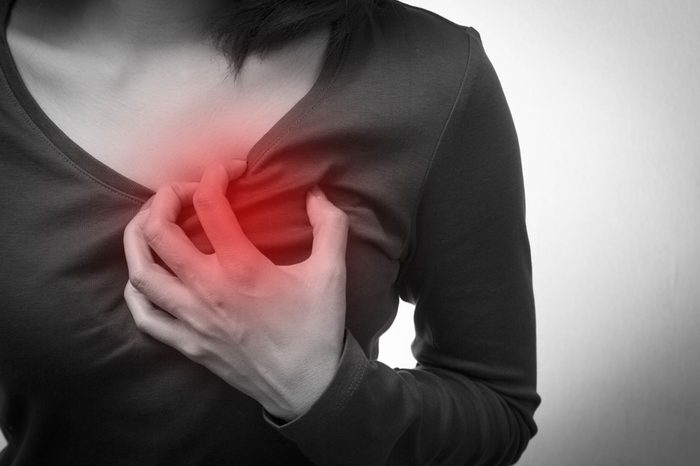
Young women need to know about MVD
A type of heart disease that impacts small blood vessels—called coronary microvascular disease (MVD)—is more common in women, and particularly in young women. Traditional tests that look for blockages in larger arteries can’t detect MVD, the AHA warns. You’re better off talking to your doctor about a questionnaire called the Duke Activity Status Index (DASI), which asks about your ability to partake in activities such as housework, yard work, and sex.

Understand PAD
In the last several years, researchers have come to realize that women have the same or higher risk as men for a condition called peripheral artery disease (PAD)—a narrowing of arteries in the legs and arms that constricts blood flow. Guidelines released put forth in 2011 suggest that both women and their doctors should be educated on the potential risk, especially when women have other risk factors, like obesity, diabetes, high blood pressure, and elevated cholesterol. The signs of PAD include painful cramping after walking, shiny skin on your legs, and coldness in one of your lower legs or foot.
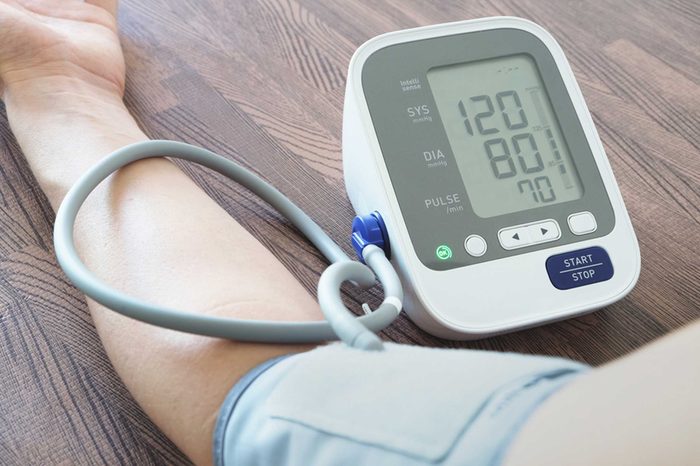
Control your blood pressure
In the last 30 years, the number of women under age 45 with high blood pressure has doubled. As a result, guidelines from the American College of Cardiology and the AHA recommend that people with blood pressure readings of 130/80 mm Hg should be treated for high blood pressure (previously it was 140/90). And don’t wait to get tested or start treatment: New research published in JAMA Cardiology suggests that women’s blood pressure can start to climb in their 20s, rising earlier and faster than men’s blood pressure on average. Regular exercise plus a low-sodium diet that features plenty of fruits, veggies, whole grains, and healthy omega-3 fats (from sources like fatty fish) can do wonders, says Dr. Steinbaum.
Now that you’re aware of these heart attack prevention tips, next learn the heart-health secrets cardiologists want you to know.
